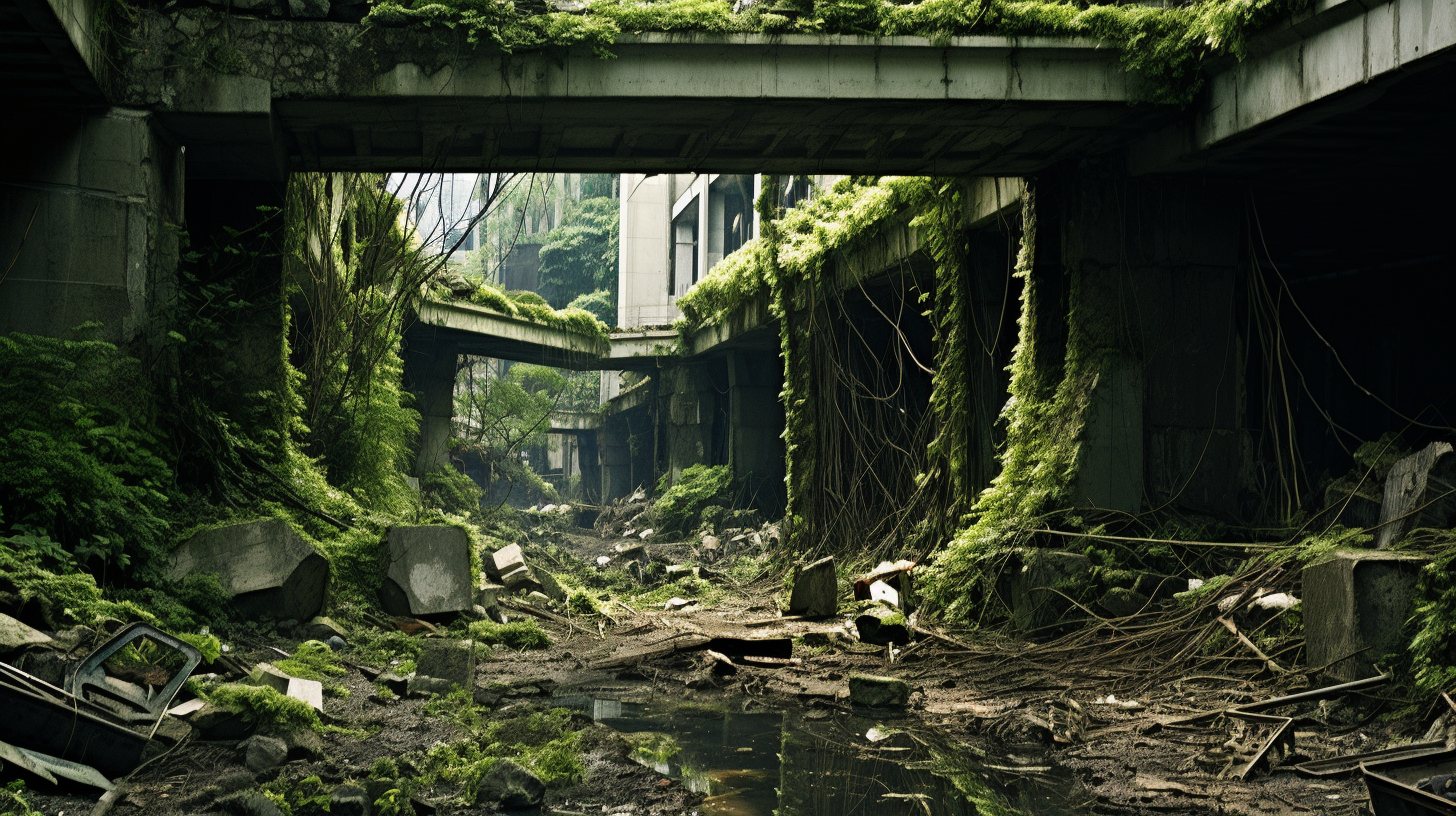In a world where environmental neglect has been the norm, humans have paved paradise to put up parking lots, erect skyscrapers, and expand urban sprawl. This concrete footprint has smothered the Earth’s natural canvas, transforming lush landscapes into geometric grids of gray. Now, the cracks in our creation have become the crevices of a new revolution, a surprising resurgence of urban ecosystems.
Asphalt Abscesses and the Return of the Wild
The once sleek surfaces of our vast urban jungles now lie fractured; nature stubbornly pries through as flora and fauna claim back their domain. Amid the decaying infrastructure, the collapse of societal order has led to an ironic liberation of the environment, allowing ecosystems to thrive in spaces once dominated by the human presence.
“It’s as if the Earth is reclaiming its space,” remarks Dr. Mariana Pierce, an ecologist whose recent work focuses on the regrowth of natural habitats in post-urban settings. We see sprouting seedlings in the skeleton of skyscrapers, forests engulfing the hollow carcasses of high-rises, and foxes skirting around the relics of rusting vehicles.
Wildlife Resurgence in the Concrete Wasteland
Remarkably, the reports of wildlife species not only surviving but proliferating in these neglected nooks are on the rise. Packs of deer graze on the overgrown verges of what was once a bustling thoroughfare, and birds of prey circle above reclaiming their aerial territory. The silence of absence has been replaced by the symphony of emergent wilderness—a defiant pulse in the heart of a silent city.
Unintended Consequences of Unchecked Development
These emerging urban ecosystems are a result of our past excesses; a byproduct of unchecked urban expansion and unsustainable development. Yet, it seems nature has a remarkable resilience and adaptability. It flourishes in environments we warred against, ironically providing solace in the backdrop of our own desolation.
“The speed at which these ecosystems have re-established themselves is remarkable,” exclaims Dr. Pierce, “suggesting that perhaps the urban environment is not as inhospitable to nature as we once believed.”
Hope in the Ruins: Education Through Dystopia
Despite the thematic despondence, these occurrences offer a bittersweet lesson. As the concrete jungles crack under their own weight, the space for education emerges from the rubble. A study of how urban ecosystems thrive without human interference serves as both a warning and a profound teaching moment.
The burgeoning wildlife and spontaneous green spaces become a living, breathing classroom. Lessons on ecological balance, biodiversity, and the importance of conservation are no longer theoretical—they are vivid, undeniable, palpable.
The Silver Lining for Future Generations
Our dystopian present is a canvas too far gone, a warning message from the future that may inspire change in the real present. For those who inherit this Earth, the remnants of urban decay amidst the resurgence of nature may serve as the greatest testament to the resilience of life, and a reminder that even when faced with the greatest adversities, nature finds a way.
In this bleak tableau, the thrumming heart of nature beating through concrete lends a perspective steeped both in fatalism and wonder—sparking curiosity and a respect for the power of the natural world within the readers.
